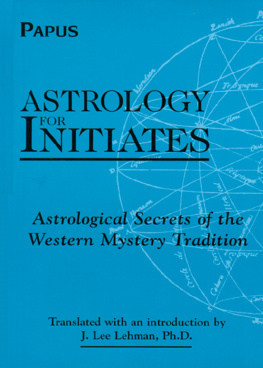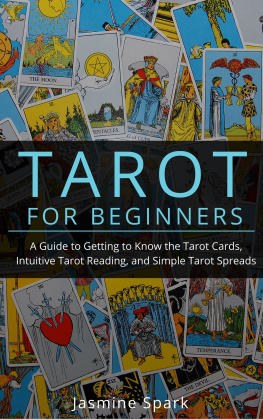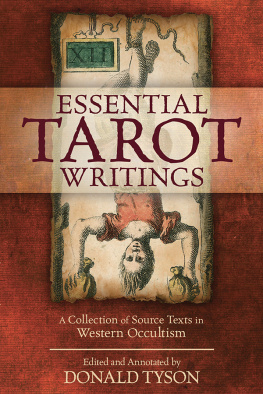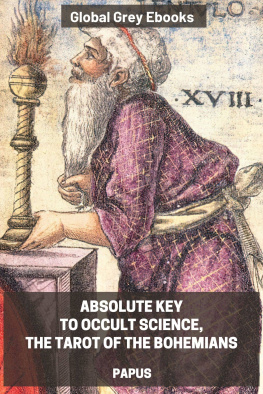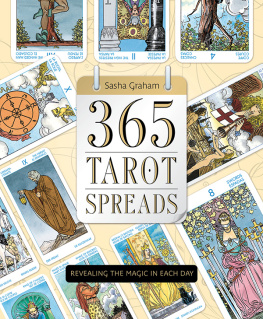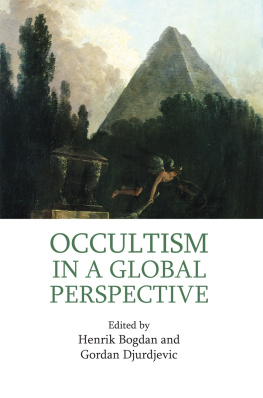Footnotes
See Jamblichus, Porphyry, and Apuleius
See Fabre d'Olivet, La Langue Hbraque Restitue.
Court de Gbelin.--Le Monde Primitif.
Vaillant.--Les Rmes, Histoire des Bohmiens.
Eliphas Levi.--Rituel de la Haute Magie.
Vaillant.--Op. cit.
Guillaume Postel.--Clavis.
Vaillant.--Loc. cit.
Eliphas Levi.--Op. cit.
"It appears, according to the most famous rabbis, that Moses himself, foreseeing the fate which awaited his book, and the false interpretations which would be given to it in the course of time, resorted to an oral law, which he delivered verbally to reliable men, whose fidelity he had tested, and whom he charged to transmit it to others in the secret of the sanctuary, who in their turn, transmitting it from age to age, secured its preservation even for the most distant posterity. This oral law, which modern Jews still flatter themselves that they possess, is called the Kabbalah, from a Hebrew word which signifies that which is received, that which comes from elsewhere, that which passes from hand to hand."--FABRE D'OLIVET, La Langue Hbraque Restitue, p. 29.
This name presents first the sign which indicates life, repeated twice, and thus forming the essentially living root EE ( ). This root is never used as a noun, and is the only one which enjoys this prerogative. It is from its formation not only a verb, but a unique verb, from which all the others are merely derivations; in short, the verb (V), to be, being. Here, as we can see, and as I have carefully explained in my grammar the sign of intelligible light (V) is placed in the midst of the root of life. Moses, when using this unique verb to form the proper name of the Being of Beings, added to it the sign of potential manifestation and of eternity, (I); he thus obtained (IEVE), in which the facultative Being is placed between a past tense without origin, and a future without limit. This admirable word thus exactly signifies the Being who is, who was, and who will be."--FABRE D'OLIVET, La Langue Hbraque Restitue.
See the Kabbala Denudata.
Translated into English by Dr. Wynn Westcott.
See the Kabbala Denudata.
See Kircher, dipus gyptiacus; See Lenain, La Science Kabbalistique; See J. De, Monas Hieroglyphica.
See Saint-Martin, Des rapports qui existent entre Dieu, l'Homme et l'Univers. See Lacuria, Harmonies de l'tre exprimes par les nombres.
See Eliphas Levi, Dogme et Rituel de la Haute Magie; la Clef des Grands Mystres;--Lacuria, op. cit.
See Fabre d'Olivet, La Langue Hbraque Restitue.
See Louis Lucas, Le Roman alchimique.
"Prter hc tria numera non est alia magnitudo, quod tria sunt omnia, et ter undecunque, ut pythagorici dicunt; omne et omnia tribus determinata sunt."--ARISTOTLE. (Quoted by Ostrowski, page 24 of his Mathse.)
Ostrowski has seen this clearly. "The passage of 3 in 4 corresponds to that of the Trimurti in Maa, and as the latter opens the second ternary of the pregenesetic decade, so the figure 4 opens that of the second ternary of our genesetic decimal."-- Mathse, p. 25.
The second He, upon which we are intentionally dwelling at some length, may be compared to a grain of wheat relatively to the ear. The ear, the Trinity, manifest or yod-he-vau, exerts all its activity in the production of the grain of wheat, or second He. But this grain of wheat is only the transition between the ear which gave it birth, and the ear to which it will itself give birth in the following generation. It is the transition between one generation and another which it contains in germ; this is why the second He is a Yod in germ.
See Fabre d'Olivet, La Langue Hbraque Restitue et Saint-Yves d'Alveydre, Mission des Juifs.
See for more details Trait Elmentaire de Science Occulte, by Papus, chap. ii.
See for further enlightenment the Trait Elmentaire de Science Occulte, p. 49 and following.
We wished to make this application of the Tarot in order to show Initiates what results might be expected from the laws explained by studying it.
Clavis abscunditarum reram.
Eliphas Levi, Dogme et Rituel de la Haute Magie.
See the Trait lmentaire de Science Occulte, chap. iii.
The signs +, -, indicate: the sign + the positive terms, the sign - the negative terms, the sign the neuter terms.
The Hebrew alphabet thoroughly establishes this affiliation for the letters corresponding to these three numbers. (See 8th arcanum.)
See p. 89, the price of the Tarots and the addresses where they may be procured.
Chatto, Facts and Speculations on the Origin and History of Playing Cards in Europe. 8vo. London, 1848.
Boiteau, Les Cartes Jouer et la Cartomancie. 4to. Paris, 1864.
Merlin, Origine des Cartes Jouer, recherches nouvelles sur les Nabis, les Tarots et sur les autres Espces de Cartes. A work ornamented with 70 illustrations. 4to. Paris, 1869.
Page 86.
These Tarots are to be found in Paris, 20 Rue de la Banque, M. Pussey, at 4 francs; and one is published in London by Mr. George Redway, 15 York Street, Covent Garden.
Clavis.
Origin of Language (Latin).
Tableaux naturels des rapports qui existent entre Dieu, l'homme et l'Univers.
La Langue Hbraque Restitue.
Rituel de la Haute Magie.
Translated into English by Dr. Wynn Westcott.
Histoire de la Magie.
See above (p. 19): Study upon the word Yod-he-vau-he.
Rituel de la Haute Magie.
Histoire de la Magie.
Dactylologie ou Langage Primitif.
Translated into French by Papus.
See Franck, The Kabbala, Paris, 8vo.
See l'Occultisme Contemporain (M. Carr).
See The Golden Verses of Pythagoras, and the Histoire Philosophique du Genre Humain.
Clavis.
La Philosophie Occulte (La Haye).
dipus gyptiacus.
See Le Roman Alchimique.
It is curious to notice, when examining the position of the hands of the personages in the Tarot of Marseilles, how often this position represents the alphabetical letter to which the figure corresponds, according to Barrois (system of dactylology or primitive language). The arcana 1, 2 and 5 are especially noticeable in this respect.
"I believe in the unknown, which God personifies,
Proved by existence itself and by immensity,
SUPERHUMAN Ideal of all philosophy,
Perfect Intelligence and Supreme Benignity."
That which follows from the divine nature.
See the second He, and the study upon the number 4.
This letter, an intermediary between (He) and (Kaph), the one designating life, absolute existence, the other the relative life, assimilated existence, is the sign of elementary existence: it is the image of a kind of equilibrium, and attaches itself to ideas of effort, of labour, and of normal and legislative action.--FABRE D'OLIVET.
See the study of the word Yod-he-vau-he.
Placed at the commencement of a word it indicates the movement which leads towards the end; placed at the end it marks the term itself to which it has tended; it then receives this form, . It is derived from the letter Samech (15) and the letter Zain (7), and it marks the secession of one or the other.
This letter is derived from its vocal (Yod), become a consonant; and it adds to its original meaning the respective significations of the letters (Zain) and (Samech).--FABRE D'OLIVET.
"Sorrow lessens in work, in fulfilling a task,
Woe to the sluggard who sleeps on his way;
Like a dog at his heels pain clings to him fast,


